Stories
Early in the pandemic experience, RMW formed a COVID-19 task force whose goals were to explore and understand the workplace design challenges posed by the global health crisis and be able to offer effective solutions quickly. Guided by our commitment to taking a client-centered approach, our Post-COVID solutions are not one-size-fits-all. They are selected for each client by guiding them through three crucial steps: Strategy, assessment, and communication.
Our Approach in Action – Kifer Study
What is a developer to do when an unforeseen public health crisis consumes the once thriving economy that justified building a speculative class A office building? Designed for Bayview Development Group, our stunning five-story mid-rise at 3655 Kifer Road was already under construction when the COVID-19 pandemic sent office workers across the nation home to do their jobs. In response, our client reacted admirably by engaging us to proactively address the growing health and safety concerns of prospective tenants brought on by the pandemic.
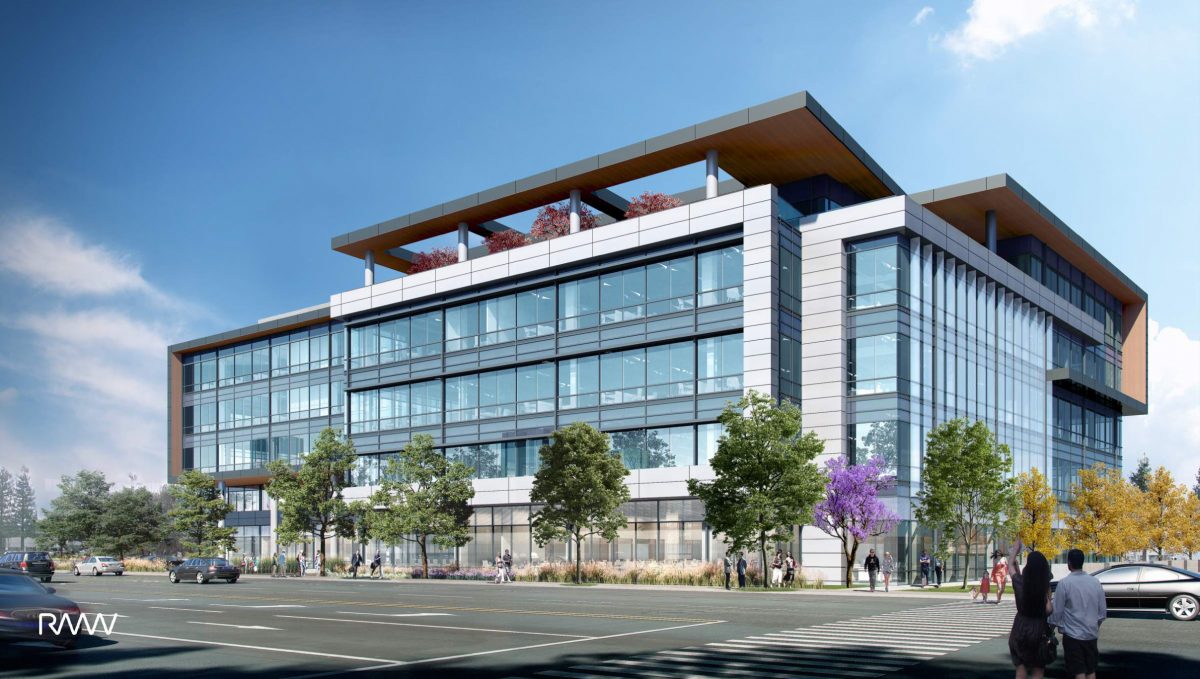
As construction of the building was already underway, we had to identify the most effective and feasible modifications as fast as possible. Thanks to our preparation, a three-pronged strategy quickly emerged. First was to focus on improving building systems to facilitate contactless building entry and navigation. Second was to improve circulation and to adhere to 6’ distancing while inhabiting the building. And last, but not least, was to provide flexible solutions that anticipate a change in needs over time.
Building Systems
We recommended building systems enhancements that would support touchless entry and arrival. This included making the building’s entry doors hands-free, adding a second set of entry doors, installing an autonomous greeting system at reception, adding touchless security turnstiles at the elevator bank entry, and upgrading the infrastructure for the elevators to support timed directional or destination elevators.
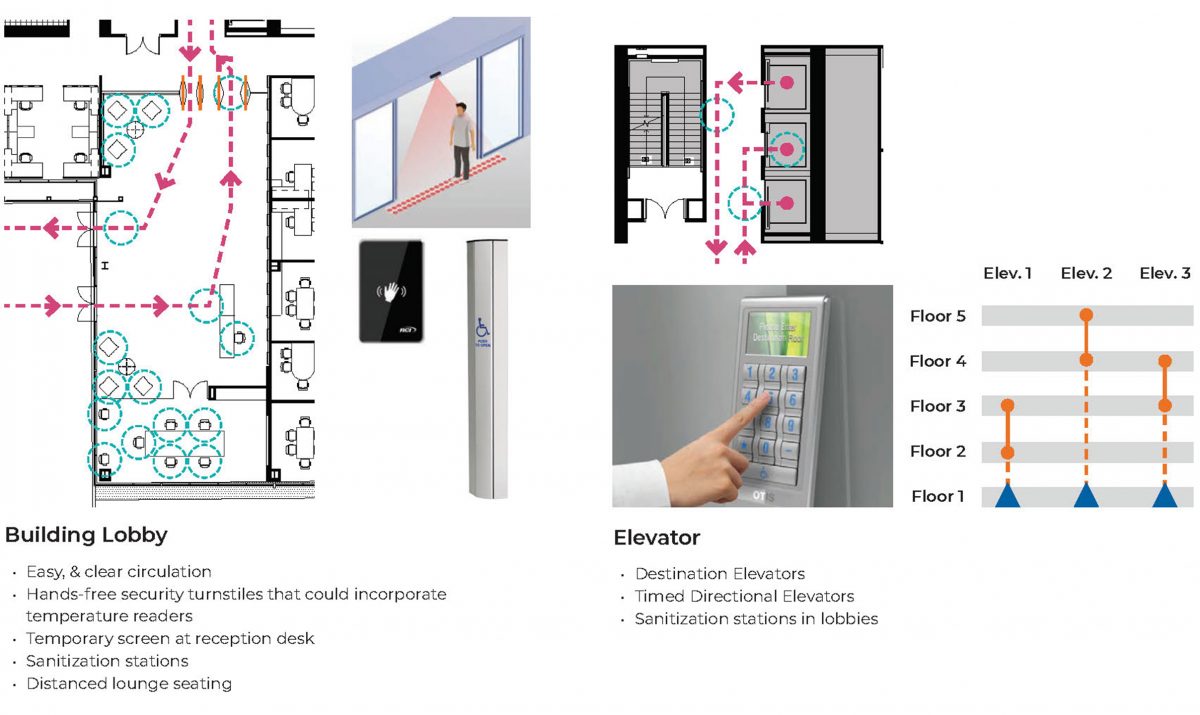
The stairwells were also identified as a way to ease congestion when traveling to one’s workstation. Since it was too late to create deeper stair landings to increase distancing among stair users, we suggested hold-open doors for contactless use and adding directional arrows to help encourage one-way travel at certain high-traffic times. Other building systems enhancements include upgraded HVAC systems with improved filtering and air exchanges, plus automated controls for HVAC and sensor-controlled lighting.
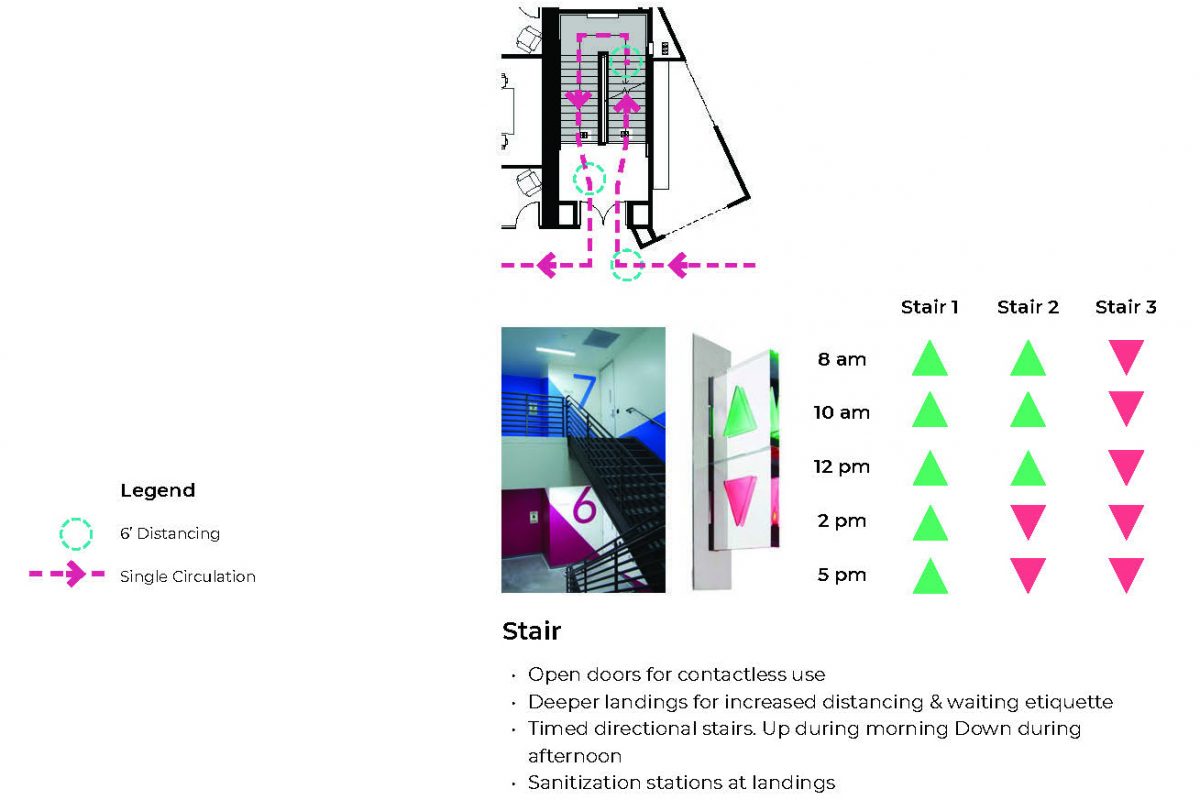
Circulation & Density
Our next priority was how to safeguard the personal health of employees while inhabiting the building. This includes modifications to common areas, as well as creating a floor plan that provides comfortable distancing from colleagues.
The restrooms were identified as a critical area of focus with special attention being paid to creating a solution whose appearance did not betray the ephemeral nature of a quick fix. The stalls were upgraded with stylish finishes into individual, private bathrooms inclusive of vanities and hands-free fixtures. With the plumbing wall already built, we simply extended it to accommodate additional private bathrooms and removed the communal sinks. An additional access point allows for the designation of one entrance and one exit per side providing a safe, private, and all-gendered restroom.
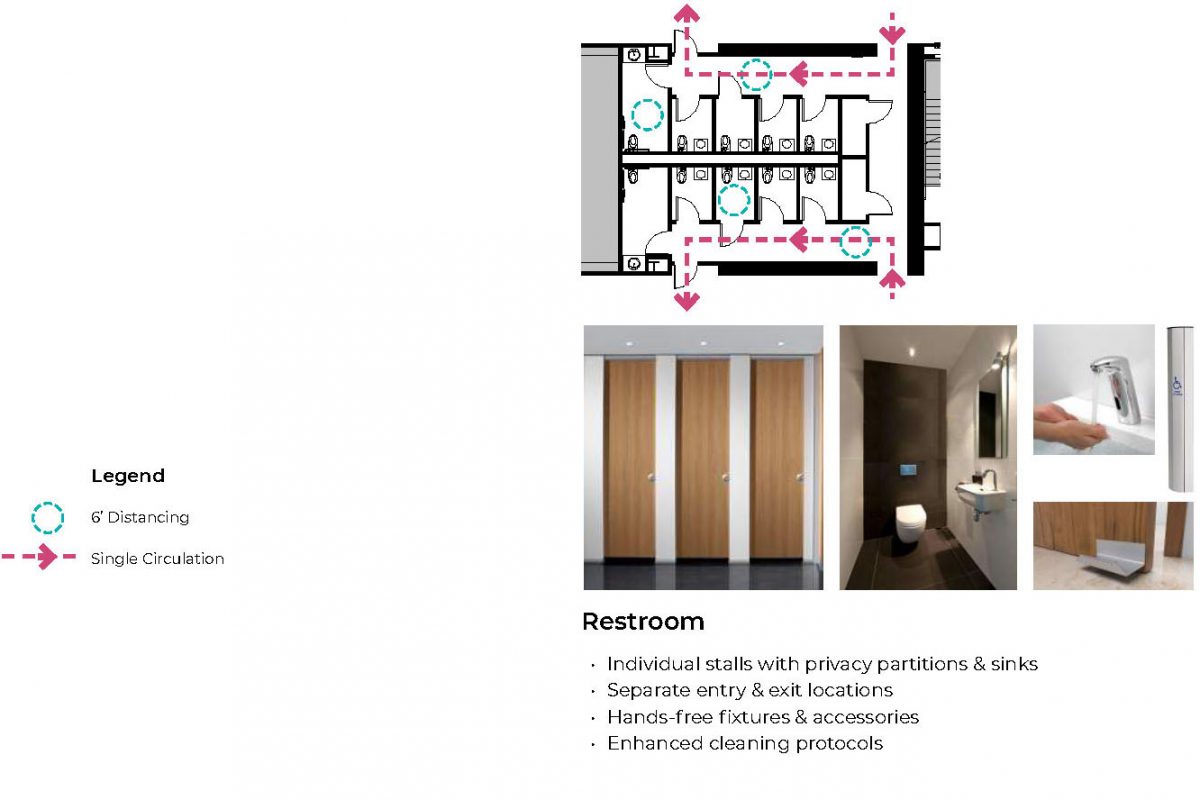
A comprehensive study was undertaken to address the open office area. Traditional pre-COVID seating favored benching in rows to achieve high density. The accepted standard for safe-distancing post-pandemic requires a separation buffer of six feet between workers. In our post-COVID plan, each neighborhood includes a variety of workstation types and layouts while maintaining 6-feet of distance, as well as smaller groupings of workstations to increase the width of circulation paths. To minimize congestion in the walkways, one-directional paths are delineated. Private offices and conference rooms are distributed throughout the space for ease of access. Conference rooms have reduced seating capacity that is offset by enhanced technology to allow for virtual attendance. Each neighborhood is supported by its own copy and supply room, collaborative space, and individual phone rooms that can double as single-user workspaces. The breakroom modifications include reduced seating, multiple access points for ease of navigation, and equipment that is spaced apart to reduce user proximity. Additional enhancements for the common areas include distanced lounge seating with bleach-cleanable fabrics and well-placed hand-sanitization stations throughout.
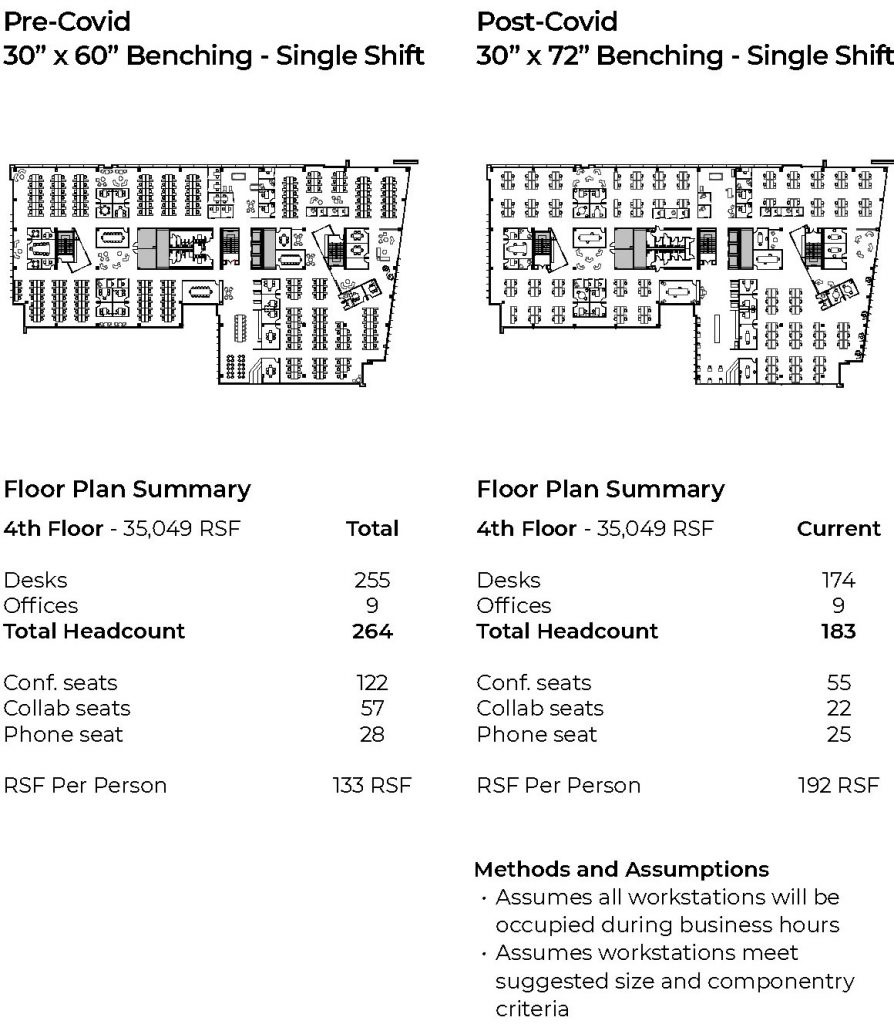
Flexibility for Future Adaptation
We were mindful in our planning to offer solutions that not only enabled our client to make the smart and necessary decisions that the present circumstances required but also allowed for flexibility in the future when circumstances and needs inevitably change. The updates to the building are suitable for either a single tenant or multi-tenant scenario. Every measure to address physical distancing is easily adjustable to accommodate a return to pre-COVID standards or evolve to a new standard. The layout of the open office is designed so that it can be infilled with additional workstations without disrupting existing ones. The conference rooms and collaboration areas can accommodate more seating without changing their footprint. The stairwell directional arrows can simply be replaced with light fixtures. The restroom access points can be converted should a tenant decide to implement gendered restroom facilities in the future. The various space plans and design options created by RMW validated future planning scenarios and COVID-related upgrades.
Through this urgent effort to implement meaningful changes to a building that was already under construction, we demonstrated how to respond quickly while giving the developer hope for the building’s future. Ted McMahon, Chief Investment Officer at Bayview Development group, was very pleased with our approach. “We are confident that with these thoughtful measures in place, our chances of finding a tenant have vastly improved, and we felt we could proceed with these investments knowing that any future change in needs can be easily accommodated,” said Ted.
As we continue to work on projects for ourselves and others, our thinking on the subject continues to evolve and grow. We know that some measures won’t last, while other things will become standard. As always, it is our goal to find smart solutions that meet our client’s goals.
Published
- Silicon Valley Business Journal: Why a local developer is spending $1M on redesigning one of its office projects’ bathrooms in the age of Covid
- The Mercury News: Coronavirus real estate: Developers eye Lawrence Station as tech offices for COVID era
- Globe St Press: Bayview Development Modifies Silicon Valley Office Design for Safer Re-entry